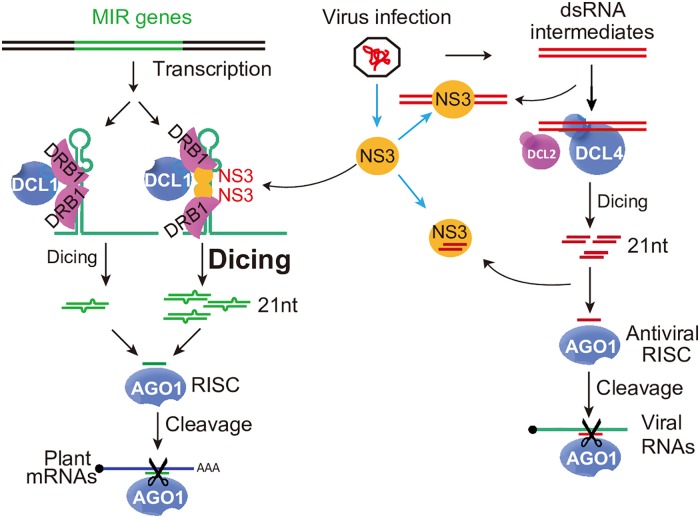Fig 7. Proposed model.
NS3 represses the PTGS pathway. Viral-derived long double-stranded RNAs (dsRNA) are processed into 21-nt siRNAs, the 21-nt siRNAs are loaded into AGO protein complex for cleavage of viral RNA genome RNAs. However, NS3 binds viral long dsRNA or siRNAs and inhibits siRNA production or the loading of siRNAs into AGO complex. Therefore, the PTGS pathway is blocked by NS3. NS3 enhances the miRNA biogenesis pathway. In mock-infected rice plants, a given pri-miRNA has a low probability of being recognized by dimeric DRB1 and then being processed into a mature miRNA by the processor complex. Consequently, the mature miRNA is insufficient to repress its target gene, which plays a crucial role in antiviral activity or development. Under RSV infection, pri-miRNA-bound NS3 interacts with DRB1 in sites required for DRB1 self-interaction and acts as a scaffold to regulate the association between DRB1 and the pri-miRNA. This increases the chance that this pri-miRNA will be processed into a mature miRNA. In addition, this compromises the expression of the target gene and enhances RSV pathogenicity.

